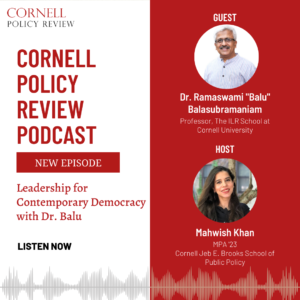Written by: Mohsin Khan
Edited by: Eghosa Asemota and Nida Mahmud
By the time you finish reading this article, somewhere in the world, a woman will have suffered an act of violence, ranging from domestic abuse, burning, sexual assault, sexual harassment, incest, acid attacks, and murder. Be it forced marriages and “honor killings” in Pakistan, ruthless femicide in India, or trafficking in Nepal, women face a barrage of physical and psychological dangers. Globally, as reported by the United Nations Department of Economic and Social Affairs (UNDESA), more than thirty-five percent of women suffer from either physical and/or sexual intimate partner violence or sexual violence by a non-partner at some point in their lives. However, some nation-wide studies of Pakistan showed that up to seventy percent of women have experienced physical and/or sexual violence from an intimate partner in their lifetime.[1]
The State of Gender Based Violence in Pakistan
In Pakistan, the social protection of women is articulated in Article thirty-two and thirty-eight of the Constitution of 1973 and affirmed in the country’s status as a signatory of various regional and international treaties seeking to protect women’s rights and promote gender equality (i.e., the 1948 Universal Declaration of Human Rights and the 1979 Convention on the Elimination of all Forms of Discrimination against Women). Moreover, since 1960, the government has taken progressive steps to legislate various issues pertaining to women and their rights such as reviving family laws like a woman’s right to divorce, marry, vote, and work. Pakistan’s eighteenth and twenty-first amendments, which decentralize education, health, and women development departments, have bestowed provinces with the power to legislate over these sectors and have fostered localized efforts to achieve the United Nations’ Sustainable Development Goals at the grassroots level.
The National Assembly has also unanimously passed several laws, such as the Prevention of Anti-Women Practices Bill (2011), the Anti-Honor and Anti-Rape Law (2016), which explicitly recognizes acid burn victims, defines domestic violence, and recognizes forced marriages and karo-kari (honor killings) as criminal acts. These landmark policies signal the Pakistani government’s commitment to the welfare of women. Likewise, the Prevention of Acid Crimes and Control Bill (2011) and the Sexual Harassment Act (2010) also give a ray of hope for women victimized by gender-based violence.[2]
A State Failure?
Despite the government’s efforts to eliminate gender-based violence (GBV), increasing incidents of violence have festered within the country’s patriarchal system. According to an independent report authored by the Human Rights Commission of Pakistan, more than 800 women either were killed or attempted suicide due to sexual assault, kidnappings, acid attacks, amputations, or burnings.[3] The year 2014 was marked by the highest number of gender-based violence cases since 2008, an over twenty-eight percent increase since the previous year.[4] Karo-kari, the practice of killing women to preserve a family’s honor has been among the worst crimes waged against women, claiming 1000 lives annually in Pakistan.[5]
Experts on gender and social issues have identified various reasons for the proliferation of these practices. Namely, these include a pervasive parochial and patriarchal mindset, weak institutions, imperfect or outdated laws and policies, along with public ignorance. Women are confronting “a unique set of antediluvian laws and customs after Zia’s radical social and legal reforms in 1979, carried out in the name of Islamization of the laws.”[6] The prevailing extramarital ordinance known as Zina Hudood Ordinance, grounded in Islamic theology, governs the arbitration of cases involving adultery, sexual assault, and fornication, often prescribing death as punishment. The ordinance also impedes women’s ability to defend themselves. Critics of the ordinance argue that “trial remains skewed against women since the victim has to provide four male eye-witnesses to testify her rape or she will be trialed for an adultery case. Additionally, the Islamic law of evidence suggests that one woman’s testimony carries half (or no) legal weight and she cannot testify on her behalf. This ordinance becomes an instrument for subjugating females.”[7] Despite the harm caused by these laws, the government presents an apologetic attitude as opposed to an ambitious one when it comes to challenging these outdated laws, mainly because of the strong feudalistic and patriarchal system that pervades the country. Illuminating how Islamic principles are enforced chiefly by male politicians, the Council of Islamic Ideology (CII) rejected a parliamentary bill last year that would have given women the right to divorce and the right to abortion, calling it “un-Islamic and unethical in local culture” and capable of destroying the family system in Pakistan,” and adding that “women can be lightly beaten by men.”[8] Furthermore, patrilineal inheritance, the deprivation of women’s property rights, along with gender disparities in education, access to health, legal aid, and participation in economic activities continue to be neglected by the state.
Combating Violence Against Women
Considering the state’s inadequate response to gender-based violence, the question of how to end violence against women, rooted in religion or social norms, in Pakistan lingers.
It is important to note, firstly, that violence against women is not a fundamental component of Islamic ideology but its incidence is the result of the misapplication, misinterpretation, and the sometimes outright denial of the ideology in a restricted society like Pakistan. The justification used for Pakistan’s parochial systems and rules is taken from Islamic principles; but the religion itself promotes gender equality, such as the right to education for all.[9] Nonetheless, much of the practices in Pakistan and in other Islamic states deviate from the origins of Islam. Most of those practices are supported on cultural ground or traditional customs, being promulgated into societies.[10] As Mir Hosseini Ziba has argued, family laws in Islam are the result of sociocultural assumptions and juristic reasoning about the nature of relations between men and women. In other words, they are “man-made” juristic constructs, shaped by the social, cultural, and political conditions within which Islam’s sacred texts are understood and turned into law.[11] The community derives this interpretation of Islam based on its own prevailing customs and cultural norms.[12]
Parallel justice systems in Pakistan, such as Jirga and Panchayat, are generally apathetic towards women’s concerns and grievances, and, therefore, the existence of both legal and religious safeguards do not percolate into the social structure.
Another important factor to note is the prevalence of fear among women, which often significantly prevents them from asserting their rights in male-dominated societies like Pakistan. Though Islamic law grants the freedom of expression and allows women to express their concerns, society unlawfully imposes punishments on those who assert their individual rights that counter the prescribed norms of the tribe or the community.[13] Thus, the malevolence of parochial culture overshadows the notions of peace and equality in Islam.
The fractured judicial system in Pakistan is another major contributor to the incidence of gender-based violence (GBV). The judicial system continually fails to provide protection and legal aid to women. In addition to weak law enforcement institutions, the prevalence of injustice, and the inefficient implementation of policies due to either limited funds or improper training, the issue is bound to worsen. The wide gap between law and its implementation, along with the denial to provide legal assistance to the victims has been observed at the local level. Therefore, an immediate step towards eliminating gender-based violence is to bring major judicial reforms with SMART objectives to upgrade or develop laws/bylaws, provide timely and economical relief to the victims (avoiding delay in court decision/proceedings etc.), and most importantly enforce these laws in the society. This may create a vibrant judicial ecosystem, adequate for providing protection and legal aid to women. Moreover, government can abolish the parallel judicial system of Jirga and Panchayat through participatory consultation with the local religious authorities. Another important step is to increase the number of female judges serving in courts, given that, out of the 1830 judges in the lower judiciary, only 266 are women.[14]
Women’s rights in matters of inheritance and property also need to be updated. According to the survey results of 1,000 rural households in Punjab, of the thirty-six percent of women who had property rights, only nine percent had control over their property.[15] The government should reform existing inheritance laws to ensure women’s autonomy over the land they own. Similarly, the government needs to build a strong monitoring and evaluation system for law and order agencies, like police and courts, and build their capacity to aid victims. A reform agenda would also need to include a plan to improve enforcement and remedy procedural difficulties. It can be handled through capacity building of lawyers, judges, and,most significantly, the police officials to respond appropriately to cases of violence against women. Moreover, police stations should be equipped with the latest resources, including forensic labs, to facilitate inspection and criminal procedures, strengthen the First Information Reporting System (through ICT), and hence aid the victims. Furthermore, awareness campaigns should be organized in relation to existing laws, educating the Law enforcement agencies and public at large.[16]
Given the research on gender-based violence which shows that economic autonomy can provide a strong decision-making power conducive for ending violence against women, the government must take immediate steps to decrease the gender disparities in the public sector.[17] These disparities are seen in the female literacy rate, which remains at sixty-seven percent compared to eighty-one percent for men, and in labor force participation rates (almost fourteen percent for women and seventy percent for men).[18] Male awareness and sensitization are prime factors often overlooked by policy makers or even development agencies.[19] The research from Gilgit-Baltistan, Pakistan’s most marginalized state, revealed that more than fifty percent of women who have financial liberty are socially empowered. There is a lower incidence of gender-based violence due to the financial, social, and political empowerment of women in this region.[20] This evidence strongly suggests that social and cultural buttresses that could facilitate women empowerment need to be encouraged and institutionalized through sensitization and education. Men’s mental health counseling can play a critical role in preventing violence against women in society. Hence, in addition to treating its consequences, there is a need for comprehensive programs that address the cultural, as well as psychological, conditions preventing the continuity of this violence in Pakistan.
Finally, essential reforms are needed in the social, economic, and judicial sectors to foster the creation of a socio-cultural and economic environment that is conducive to women’s safety and autonomy. There must be a fundamental change in societal attitudes, and particularly in men’s perception of women’s status. As the founder of Pakistan, Muhammad Ali Jinnah shared, “No nation can rise to the height of glory unless their women are side by side with them. There is no sanction anywhere for the deplorable condition in which our women have to live.”[21] For the sake of its future generations, Pakistan must commit itself to finding the key to the cage of gender-based violence in order to unlock prosperity for all.
References
- UN Women, The World’s Women 2015, Trends and Statistics, Chapter 6, Violence against Women, United Nations Department of Economic and Social Affairs (2015). Accessed from http://www.unwomen.org/en/what-we-do/ending-violence-against-women/facts-and-figures#notes ↑
- UN Women. Pro-women laws take hold in Pakistan. UN Women Pakistan, Islamabad (March, 2012). Accessed from http://www.unwomen.org/en/news/stories/2012/3/pro-women-laws-take-hold-in-pakistan ↑
- Human Rights Commission of Pakistan, Status of Human Rights in 2016, HRCP Annual Report (2016). Accessed from http://hrcp-web.org/hrcpweb/wp-content/uploads/2016/04/Women12.pdf ↑
- Ibid. ↑
- Terrence McCoy, In Pakistan, 1,000 Women Die in ‘honor Killings’ Annually. Why Is This Happening? The Washington Post (May, 2014). Accessed from https://www.washingtonpost.com/news/morning-mix/wp/2014/05/28/in-pakistan-honor-killings-claim-1000-womens-lives-annually-why-is-this-still-happening/?noredirect=on&utm_term=.3f3ec6bead5b ↑
- Mahmood Mamdani, Good Muslim, Bad Muslim: America, the Cold War, and the Roots of Terror, Pantheon (2004) pp.1-4 ↑
- Rahat Imran, Legal Injustices: The Zina Hudood Ordinance of Pakistan and Its Implications for Women, Journal of International Women’s Studies 7(2) (2005) pp.78-100 ↑
- BBC Asia, Who are the Pakistani Group Proposing to ‘Lightly Beat’ Women? (May, 2016). Accessed from http://www.bbc.com/news/world-asia-36413037 ↑
- United Nations, Forgotten Dowry: A Socially Endorsed Form of Violence in Pakistan, (2011) pp. 20 Accessed from http://www.sachet.org.pk/web/user_files/File/Forgotten.pdf. ↑
- Jamal A. Badawi, The Status of Women in Islam, Al-Ittihad 8(2) (Plainfield, 1971). Accessed online: http://www.sultan.org/books/the_status_of_woman_in_i slam.pdf ↑
- Ziba Mir-Hosseini, Towards Gender Equality: Muslim Family Laws and the Shar’iah’, Wanted: Equality and Justice in the Muslim Family (Kuala Lumpur, 2009) pp. 23–64 ↑
- Fariqa Ibrahim, Honour Killings Under the Rule of Law in Pakistan, McGill University (Montreal, 2005) Accessed from http://digitool.library.mcgill.ca/R/?func=dbin-jump-full&object_id=83953&local_base=GEN01-MCG02 ↑
- Jallow, AY, Freedom of Expression from the Islamic Perspective, J Mass Communicat Journalism (2015) pp. 5-278. Accessed from doi:10.4172/2165-7912.1000278 ↑
- Farzana Bari & Saba Gul Khattak, Power Configurations in Public and Private Arenas: The Women’s Movement’s Response, Power and Civil Society in Pakista, Oxford University (Karachi, 2001). ↑
- Punjab Commission on the Status of Women. Gender Parity Report 2012-15. Press release Express Tribune (March, 2016). Accessed from https://tribune.com.pk/story/1060669/violence-against-women-has-increased-report/ ↑
- Ministry of Women’s Development (MWD), Pakistan National Report on Status of Women Rights. Submitted to the Fourth World Conference on Women (Beijing, 1995) ↑
- Shafaq Asmat, Violence Against Women: Actual Situation in Pakistan and Effective Measures to Fight Against it, Express Tribune (March, 2016). Accessed from https://tribune.com.pk/story/1060669/violence-against-women-has-increased-report/ ↑
- Imran Chaudhry & Farhana Nosheen, The Determinants of Women Empowerment in Southern Punjab (Pakistan): An empirical analysis, European Journal of Social Sciences 10(2) (2009) pp. 216-229. ↑
- Mohsin Khan & Qurat-ul-Ain Ali, Socio-Economic Empowerment of Women in Pakistan; Evidence from Gilgit-Baltistan, International Journal of Asian Social Science 6(8), (2016) pp. 462-471 ↑
- Government of Pakistan, Economic Survey of Pakistan, Chapter 10 & 12, Ministry of Finance, (Islamabad, 2016) pp. 12-13 ↑
- Muhmmad Ali Jinnah, Address to Muslim University of Aligarh, (Aligarh, March, 1944) ↑





